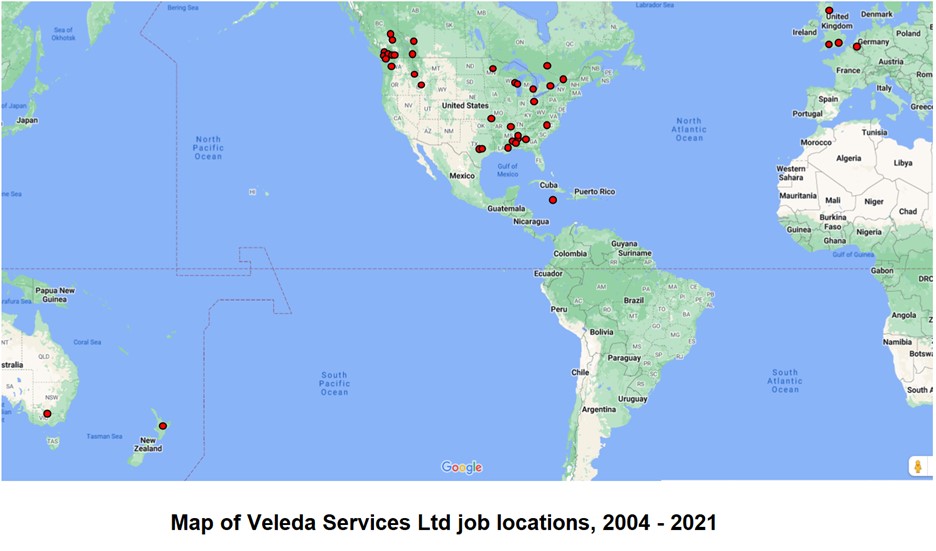One objective in Maintenance is to always be working on the maintenance activities that have the highest value at any time. This means that, for all the work orders that are in the maintenance backlog, the relative value of each needs to be known.
Unfortunately, by their nature, the value of any work order depends on who you ask. Consider two work orders, one to paint a conveyor in the receiving department and another to install a new printer in the engineering office. To decide which is the most important, the person making that decision must know the risk or cost of NOT doing each job, usually in a certain time frame (say next week). Because the Receiving Supervisor is unlikely to understand the need for the new printer, and vice versa, the decision is usually left to someone with a wider responsibility, and it may be the Maintenance Supervisor or Planner.
To understand the risk of not doing any job usually requires a substantial amount of detailed knowledge, which is why it is recommended that setting priorities is a joint responsibility, shared by Operating and Maintenance supervisors, with opportunities for input from other interested people, such as project managers.
There are many tools available for setting priorities, such as a matrix which combines the consequence of not doing a job in a certain time frame with the probability of that consequence occurring. For example, if a pump has a noisy bearing, the consequence of that problem resulting in a breakdown is probably known – say 4 hours of downtime to change the pump’s rotating assembly, with a production loss of $20,000. This can be multiplied by the probability of the breakdown occurring before the next scheduled shutdown to calculate the risk. If this probability is 50%, then it is a $10,000 risk.
The problem with using this kind of calculation for each and every work order is that, while the consequence of not doing a job may be easily determined, the probability of that consequence occurring is often an educated guess, usually based on the experience and knowledge of people who are very familiar with the equipment and its history. Note that the consequence of a breakdown is sometimes recorded as an “equipment criticality” rating which some believe should be used for setting work priorities. Because criticality ratings do not include the probability of failure for various failure modes and may change they are not a great help for this purpose (see “Criticality ratings – are they of value?“).
In the end, the risk calculation determines when a job should be done. In practice, if work priorities are being set by experienced and knowledgeable Maintenance and Operating supervisors, they do not need to make a calculation. They can make a judgement call on how soon a job should be done that will be every bit as useful as a formal risk calculation. In all my years of looking at ways of setting priorities, I have never seen a “priority matrix” actually being routinely used, although they often show up in maintenance business processes and manuals.
I am always concerned when a manager suggests that their greatest need is a process for setting work priorities, because that is an indicator that the Operations – Maintenance partnership is weak. In the only strong partnership in which I had the privilege to work, no priority system was needed. Maintenance understood what was important to Operations (meeting a shipping deadline, running a product trial, etc) and Operations accepted the importance of the preventive maintenance that was being done.
That being said, there is still a need to sort all the backlog work orders in to some order of importance or urgency.
As each work order is originated, there should be an initial review by the Maintenance and Operations area supervisors who should decide a) if the work should be done at all and b) when it should be done (they should also make some other decisions at that time, such as shutdown requirements and an initial guess at the cost and time required). A rating, which can be called its “priority rating” can be used to indicate when the work should be done. A priority rating scale from a very large organization is shown below:
| Priority | Description |
| 1 | Emergency – completion within 8 hours |
| 2 | Urgent – completion within 24 hours |
| 3 | Completion within 7 days |
| 4 | Completion within 30 days |
| 5 | Completion within 90 days |
| 6 | Completion – more than 90 days |
Lets look at the value of such a rating. Assume that the average backlog is 4 weeks (not a bad target for a large department). This means that half of the backlog, the most urgent work, will have a priority rating from 1 to 4. Lets also assume that a weekly scheduling process is in place, which means that priorities 1 and 2 and much of the priority 3 work will be completed before it is added to a weekly schedule. The result is that the important work that can be scheduled will all have a priority rating of 4, 5 or 6 (with a few 3’s). This is of very little help when deciding which work should be done first. So any priority rating system should have an appropriate range of target completion dates that is compatible with the scheduling cycle.
And, of course, the priority rating for each work order should change. If it starts as priority 4 (from the table above – completion within 30 days) then, everything else being equal, after 3 weeks its priority should change to 3 (completion within 7 days). The administrative effort to maintain priorities in a large backlog is considerable, and in my experience, it is seldom done. In fact, in some of the larger maintenance computer systems it is necessary to open each work order, change the priority, then close the work order – the priorities can not be changed in a “table view” which makes it difficult to compare the priorities of the various work orders. The result is that formal priority ratings are frequently ignored when work is scheduled.
Note that when a work order is initiated its starting date can not be known. A target date can be indicated, but it is the scheduling process, which normally assigns a fixed maintenance resource to the highest-priority jobs, that sets the date on which the work will start. Because the backlog is constantly changing, with both high- and low-priority jobs being added, the starting date for any work order will depend on where it stands in this changing backlog at any time.
Even if a good initial priority-setting process is in place, it merely determines roughly where the work will stand in the backlog, and is not a lot of help during the detailed scheduling process when the exact sequence of starting work is determined.
There is a special category of work which should over-ride any priority rating system, and that is those few jobs which have an absolute deadline, i.e. they have no value if they are completed after a specific date. An example is painting the flagpole at the plant entrance for a visit by VIP’s. If the job is done the day after they leave, it has lost its value. A special priority “rating” should be used for these few jobs.
The best priority-management system is to maintain the backlog with all work requiring the same maintenance resource (such as an area maintenance work crew) in the order of highest to lowest urgency, with new work orders being regularly “slotted in” at the appropriate place (based on their own urgency) and completed work orders being removed. Many maintenance computer systems have limited functionality for sorting work orders in this way, however, MS Excel, with a simple add-in, is a powerful and easy-to-use tool for ongoing backlog management. What we believe is the best method for using Excel to do this has been developed with much trial and error and is demonstrated in our video “Scheduling Maintenance Work – Part 1”.
Maintaining a prioritized list of all backlog work orders makes scheduling much easier. It becomes a matter of selecting work from the top of the backlog list, ignoring jobs that can’t yet be done (waiting for materials, maintenance access, etc). When the available labour is committed, the draft schedule is complete. This process is shown in Part 2 of the Maintenance Scheduling videos.
The priority rating is not the only consideration when scheduling work. If the backlog is well-managed, the Operations and Maintenance Supervisors (who together should decide on what work is to be done and its priority) and the Planner should all have a good feel for the work orders that are in the backlog, without having to look at the computer. So when high-priority jobs are scheduled, it should be a standard practice to combine these jobs with low-priority work which requires some of the same resources. For example, if it is necessary to rent a 300-tonne crane for a high-priority work order, other jobs that also need a 300-tonne crane should (probably) be done while the crane is on site. The same applies to scaffolding, excavation, complex vessel entry procedures, long travel distances and any other high-cost preparatory work.
And the cost or complexity of a job or the availability of materials should have no bearing on its urgency. The only considerations should be the probability of failure before the work can be scheduled and the consequence of that failure. Work that is expensive or complex is often delayed but it should not be, unless some action can be taken to reduce the probability of failure, such as a temporary repair.
Work that remains in the backlog for a very long time should be carefully reviewed. It may have been delayed because its priority is perceived to be low (e.g. installing sound-proof glass in the maintenance manager’s office window) in which case it should be cancelled, or it may be continually increasing (e.g. painting a critical tank to prevent it from further corrosion) in which case its priority should also increase.
To return to the Articles index click here.
© Veleda Services Ltd
Don Armstrong, P.Eng, President
don.armstrong@veleda.ca
250-655-8267 Pacific Time
Canada








